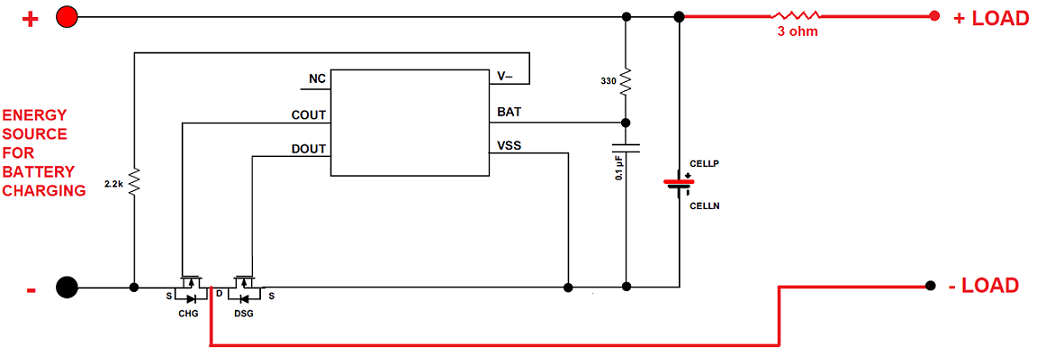Other Parts Discussed in Thread: BQ24314
Hi,
I am designing a charge controller for usage in Energy Harvesting applications. This charge controller takes power from the solar panel, and charges 3.7V, Li-Ion battery pack (either 1 or 2 cells depending on energy rating requirement). I am pursuing suitable energy harvester ICs that can work with Solar power, but there is no adequate Battery protection mechanisms like over-charge, over-discharge, over-current, short circuit, etc. So, I am thinking of using a companion protection IC like BQ2970 that can provide good protections. For easy understanding, I have attached the block diagram of the intended charge controlling application. Battery Pack has in-built protections already, but they are also not adequate. Battery pack is provided by an external vendor, that I don't have much control on it. So, I want to provide protection circuitry external to the battery pack as well.
I have gone through BQ2970 (and its series), but there are some issues with it as below.
- I need over-charge protection of 4.2V for my Li-Ion battery, whereas BQ2970 has 4.275V min. 3.85V for BQ29706 is much lower than the required 4.2V.
- BQ2970 is actually meant for protection within the battery pack. However I need protection external to the battery pack. Kindly check below attached block diagram.
- BQ2970 requires external MOSFETs. Our preference is having internal MOSFETs, though this is not a hard requirement.
- BQ2970 does not seem to fit the protection requirement as per the below intended application (in the block diagram).
- BQ29700 has Over-discharge cut-off voltage of 2.8V. Once it has cut-off at this voltage, the battery will get charged again based on the solar power. Once it charges to ~3.7V, we want to connect the battery to the load again. I am terming this as Load Re-connect voltage. Such Load re-connect mechanism is not there in BQ2970.
- We want the IC to have charging/discharging ratings up to at least 0.5A.
Can you suggest any suitable IC that can resolve above issues?
Thanks & Regards,
Vikas Chandra Rao.




